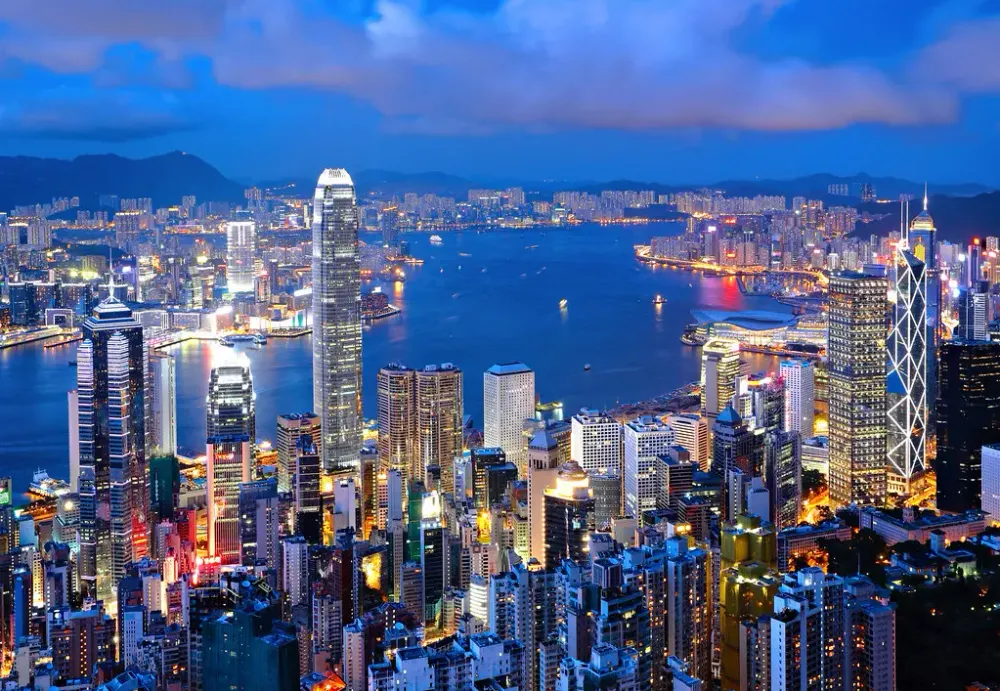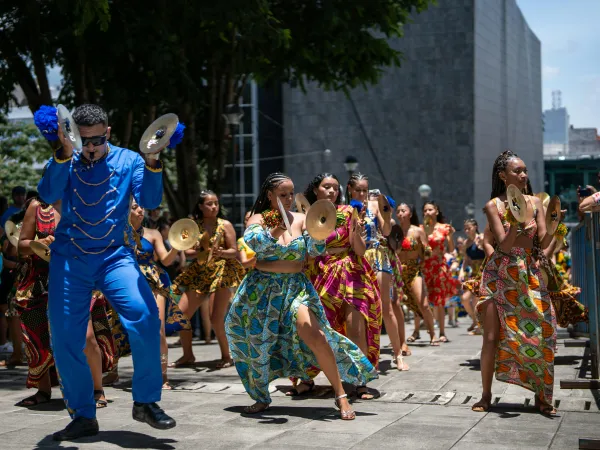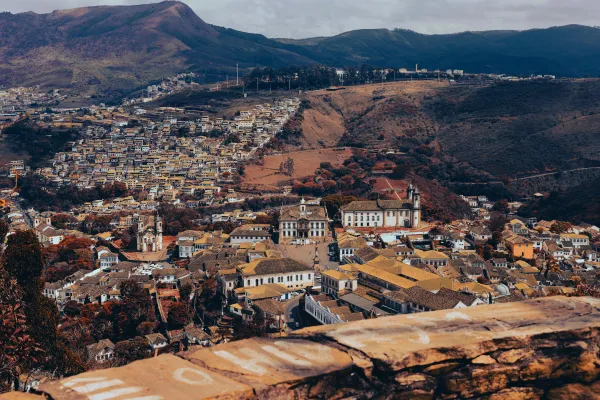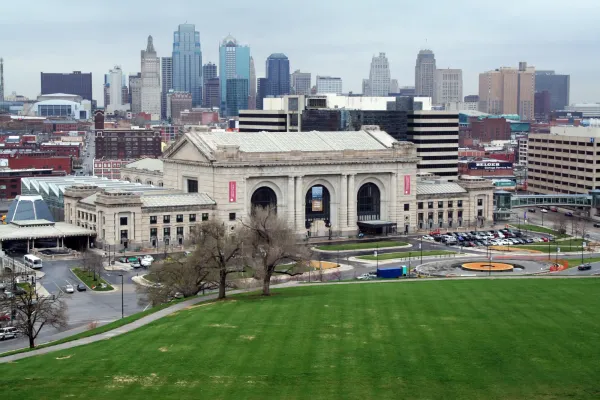Beyond the Office Park: Rediscovering Joy in Tech-Driven Cities
For all their talk about “smart living,” tech-driven cities often look and feel emotionally bankrupt. Sleek skylines, same glass boxes, same coffee chains — different coordinates. They sell innovation but end up cloning the same sterile aesthetic everywhere: efficient, optimized, and completely drained of soul.
The problem isn’t just architecture. It’s a mindset. When a city’s design revolves around data and productivity, it stops feeling like a place made for people. The rhythm of human life—imperfect, messy, spontaneous—gets replaced by logistics, KPIs, and surveillance feeds. What’s left is a world that runs perfectly, yet somehow feels broken.
These cities glow with screens but feel dim inside. You can have fiber internet, self-driving cars, and AI assistants — and still miss the sound of real laughter echoing down an old street. The gloom isn’t in the weather; it’s in the way we built progress to look more like a spreadsheet than a community.
Mountain View, California
Comparison, they say, is the thief of joy. However, without comparing Mountain View to San Francisco, Los Angeles, or even nearby Palo Alto, the city is still unbelievably boring.
The architecture feels sterile, nightlife is pretty non-existence, and the last time I visited, I almost lost my mind.
Google’s main campus dominates the city. You can’t tour the offices, but you can often stop by the Android sculpture garden to see the giant desserts (Cupcake, KitKat, Pie, etc.) and snap photos. Mountain View is where the blueprint for the modern tech city was written: wide suburban grids, corporate campuses disguised as parks, and a work-life philosophy built around convenience rather than connection.
Walk around Mountain View and you’ll notice the contradiction. Everything works, but little surprises you. Perfect lawns, mirrored facades, and parking lots large enough to land a drone fleet. It’s the physical manifestation of “productivity,” built to eliminate friction, but unfortunately, it seemed joy was collateral damage.
Since Mountain View was built for everyone who wants to 'plug in', little emphasis was placed on the little things that could boost productivity. Locals and visitors have had to find joy and happiness in micro-moments, the little things that actually count.
Things to Do in Mountain View
If you are looking to get your joy back, you could visit a cozy booth at Red Rock Coffee, journal at Voyager Craft Coffee, or work outdoors at Philz. Mountain View is also full of low-key yoga studios, meditation groups, and community gardens, and locals use them as antidotes to mental overload.
Castro Street is another good spot that hums with a different kind of rhythm — indie cafés, crowded weekend markets, people actually walking again.

Bellevue, Washington
Bellevue feels like it wasn't built for humans. There is no cultural feel, and everywhere you turn, you see the big bold touch of commerce.
In older cities (like Seattle, Portland, or Boston), the urban form evolved as people settled, built, rebuilt, and layered new architecture over the old. That’s why you find odd alleys, crooked blocks, local diners next to century-old churches — signs of history and chaos. Bellevue skipped that. Most of its core was developed from the 1980s onward by corporate and municipal planners who said, in effect, “Let’s build a downtown here.”
So, instead of an organic collage of neighborhoods, it’s a carefully zoned grid with office towers, upscale apartments, and retail spaces placed where they “should” be. The heart of downtown Bellevue, around Bellevue Square and Lincoln Square, exists primarily to facilitate business and shopping.
Everything from the sidewalks to the parking garages supports consumption and corporate activity. Cultural elements (like theaters, galleries, or quirky cafés) exist, but they feel inserted after the infrastructure was built, not as part of its DNA.
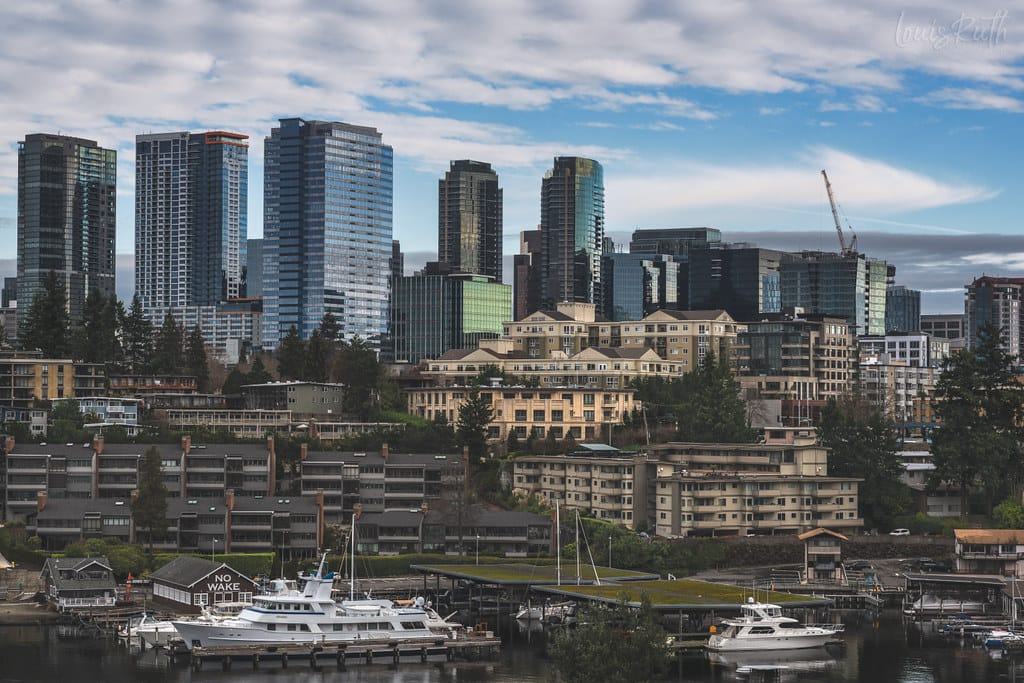
Bellevue is one of the most revealing psychological effects of living in perfectly engineered cities ( like Mountain View, Irvine, or parts of Singapore). People often become reflections of the environment they inhabit. When the environment is hyper-controlled, safe, and predictable, the people living in it can start to feel muted, emotionally flat, or detached.
In chaotic, colorful cities, your brain gets micro-bursts of novelty: street art, unexpected encounters, sounds, smells, texture. That creates dopamine, curiosity, and emotional connection. In Bellevue, that sensory input is controlled, same materials, same sound levels, same visual tone. Streets are quiet, signage minimal, buildings uniform. There’s little emotional friction — so the brain stays in neutral.
Over time, that leads to a low-grade numbness. Life functions well but rarely surprises you. Talking about life, most of Bellevue’s social structure revolves around tech, corporate, and professional work. Most people’s routines are built around productivity — commute, gym, groceries, Netflix. There’s little communal ritual or shared creative space.
When life in Bellevue starts to feel like a never-ending loop of work, errands, and scrolling, flip the script by creating something. Take a pottery or dance class at Bellevue Arts Museum or Meta Art Studios. Bring your guitar, sketchbook, or camera to a quiet park and make something out of the stillness. Volunteer at Kelsey Creek Farm or the Bellevue Botanical Garden and remember what it’s like to do something with no KPI attached.
There are tech meetups, creative networking nights, hiking clubs, book circles, and mindfulness groups — dozens listed on Meetup or posted on café bulletin boards. Attend Crossroads Community Center events or weekend farmers’ market gatherings, where conversations happen over fruit samples and folk music.
Things to do in Bellevue
Bellevue surprised me.
I went expecting a quieter version of Seattle—sleek, polished, maybe a little too corporate. But somewhere between the stillness of Meydenbauer Bay at sunset and the damp hush of the Botanical Garden after a morning rain, it started to feel… grounded. Local. A place where people actually live and take slow walks and know which coffee shop won’t be slammed on a Saturday.
I ended up spending an hour on a park bench by the lake, watching a kid try (and fail, then try again) to balance on a paddleboard. The water shimmered, soft and glassy, and the only real sound was a couple laughing nearby with takeout spread out between them. It felt like the world had dialed down its volume.
Later, I wandered the trails at Bellevue Botanical Garden—not in a hurry, just following wherever looked greenest. The air smelled like cedar and something sweet I couldn’t place. I passed exactly three other people in 45 minutes. It was perfect.
And before heading out, I popped into the Bellevue Arts Museum Store on a whim. I walked out with a handmade mug that now holds my pens. The woman at the counter told me it was made by a local ceramicist who “likes pieces that feel like they’ve been held before.” That line stuck with me.
Bellevue isn’t flashy. It doesn’t try to impress you. But if you give it a little time and attention, it quietly wins you over.
Austin, Texas — Where Creativity Fights Back
Austin, Texas, is almost the opposite of Bellevue or Mountain View in how it’s supposed to feel. It sells itself as quirky, musical, and free-spirited — the “Keep Austin Weird” capital of creativity. But in recent years, a lot of people who live there (especially locals and long-timers) have started saying the same thing
“Austin doesn’t feel like Austin anymore.”
Austin never asked to be the next Silicon Valley — it just woke up one day and found Teslas where tacos used to be. Tech money flooded in, startups sprouted like wildflowers after a storm, and suddenly the city famous for outlaw music and cheap beer had venture capital woven into its DNA.
In 2010, you could walk down South Congress and see murals, vintage shops, and street musicians. Now you’ll find luxury hotels, Tesla showrooms, and cranes on every horizon. The skyline grew faster than the city’s soul — so locals describe it as “Silicon Valley with cowboy boots.” It’s not boring visually, but it’s emotionally disorienting.

Traffic in Austin is a full-time villain. Public transit is limited, bike lanes are inconsistent, and daily commutes can kill any creative energy the city still has. When just getting somewhere fun takes an hour, the joy of spontaneous living disappears.
Austin can still be joyful if you look beyond its polished, over-engineered surface. The city’s real soul hums quietly in places like Barton Springs Pool at sunrise, where locals float in cool blue water before the day begins, or in late-night blues jams at C-Boy’s Heart & Soul, where music spills out onto the sidewalk. You can feel it on Greenbelt trails after a rainstorm, when the air smells like cedar and limestone, and at East Austin’s community markets, where neighbors swap stories over homemade crafts and tamales. These are the pockets where Austin’s old warmth still lives — unfiltered, communal, and unmistakably human.
Things to Do In Austin
Honestly, the stuff that sticks with me isn’t what people usually come for. One evening, I was walking across the South Congress Bridge, wasn’t even planning to stop—and the light over the water just hit right. It was quiet, warm, and kind of perfect in that ordinary way.
Another time, I ended up at Radio Coffee & Beer to grab a coffee, and I stayed half the day. Folks were just hanging out, music playing, no one in a rush. It felt good to slow down.
And Barton Springs? Freezing, every time. But once you jump in, you’re wide awake and happy to be alive. There’s nothing like it in the summer.
San Diego, California — The Art of Ease
On paper, San Diego should be perfect. The weather never really breaks, the ocean is always near, the tacos are fresh, and the sunsets dissolve the day into watercolor calm. Yet, beneath all that beauty, there’s a strange quiet — a kind of sadness that hums through the palm trees and pastel skies. It’s not despair; it’s something subtler, a melancholy that comes from a city where nothing ever truly goes wrong, but nothing quite stirs the soul either.

Weather plays a big role in San Diego's melancholy. The problem with perfect weather is that it flattens emotion. There are no seasons to push people inward or pull them back out — no sense of beginning or renewal. Every day feels like a mild variation of the last, and over time that can make life blur together. When the sun shines constantly, even joy loses its contrast. You start to wonder if comfort can be numbing too.
Moreover, San Diego is also transient by design. Military rotations, university students, and out-of-state dreamers all pass through, filling apartments and then leaving again. Friendships bloom fast and fade faster. The city feels friendly — everyone smiles — but it’s hard to dig roots into such soft, shifting sand. Beneath the easy conversations and outdoor brunches, there’s a quiet ache for permanence.
Finally, behind the calm exterior lies one of California’s harshest realities: the cost of simply existing. The rent is high, the wages low, and the gap between how people live and how they post about it is wide. San Diego’s beaches glow golden at dusk, but many residents are working two jobs to stay close to that view. It’s hard to feel endlessly carefree when paradise comes with a price tag.
For generations, San Diego has symbolized the end goal: the coast where life is supposed to make sense. But when the dream becomes your daily view, reality quietly reclaims its space. People move here expecting happiness and feel unsettled when it doesn’t arrive on schedule. That gap between the dream and the day-to-day can feel heavier under the endless sun — why am I not happier in paradise?
Things to Do in San Diego
I usually start the day at Sunset Cliffs—not for Instagram, just to stand there with a coffee and watch the waves roll in. It’s quiet in the morning, a little chilly, and feels like you’ve got the city to yourself.
Later, I’ll wander Balboa Park. I rarely go for anything specific—I just like walking around. There’s always something random happening: a drum circle, a guy painting, kids climbing trees.
And when I’m hungry, I head to Barrio Logan. There’s this little tortilla spot I found years ago—cash only, always packed, no sign. You eat outside on the curb, tortillas still warm, and it’s perfect. Not fancy, not curated. Just real San Diego.
Designing for Joy — The Next Urban Shift
The next frontier for tech cities isn’t faster data or taller glass — it’s emotional sustainability. Mountain View, Bellevue, Austin, and San Diego each hint at a quiet rebellion within the machine: a movement toward tech humanism, where innovation doesn’t erase the human texture of daily life but restores it.
You can see it in design choices that put well-being back into the blueprint. Bellevue threads green corridors through its downtown core, proving that wealth and wilderness can coexist. Austin experiments with open-air coworking spaces and cultural zoning that keeps artists in the frame, not on the fringe. San Diego plans cycling routes that connect beachfront neighborhoods to biotech campuses, merging motion and mind. Even Mountain View — birthplace of optimization — is rethinking “wellness architecture,” bringing natural light, gardens, and walkability into its once-mechanical landscape.
These cities are learning that joy isn’t a side effect of prosperity; it’s an infrastructure. It’s measurable, buildable, and increasingly essential to long-term resilience. The future urban ideal won’t be the smart city that watches you; it’ll be the joyful city that listens — wired and alive, efficient and empathetic, designed not just for function, but for feeling.
FAQ
1. Why do places like Bellevue or Mountain View feel emotionally flat even though they’re prosperous?
Because prosperity often replaces spontaneity. These cities were built for work, not wonder. Their streets, zoning, and social rhythms revolve around efficiency — wide roads, office parks, identical apartments. Life becomes predictable, frictionless, and safe, but also stripped of surprise. Without sensory variety or social unpredictability, the human brain simply has fewer moments of awe.
2. Is Austin, Texas really losing its “weird” energy?
Not entirely — but it’s evolving. The tech and real-estate boom transformed Austin from a scrappy creative hub into a sleek lifestyle city. You can still find the old soul in blues bars, backyard shows, and food-truck alleys, but the edges have softened. The city isn’t dead — it’s just over-curated. The challenge now is keeping authenticity alive amid prosperity.
3. What makes San Diego feel quietly sad despite its perfect weather?
Perfection can be isolating. San Diego’s endless sunshine, transitory population, and high cost of living create a strange emotional dissonance — a place that looks like paradise but often feels emotionally still. The city’s beauty offers peace, but without contrast or seasonality, people sometimes lose their sense of time and renewal.
4. Do people in these cities actually enjoy living there?
Yes — just differently. Many residents value stability, safety, and access to nature. The “boredom” outsiders perceive often feels like peace to locals. What’s missing is collective rhythm: shared music, festivals, and spontaneous community. People enjoy these cities when they stop seeking excitement and start creating it.
5. How can someone feel more alive in a city that seems soulless?
Shift from consumption to participation. Join local classes, volunteer, walk instead of drive, talk to strangers at farmers’ markets, support independent venues. When you interact with your city — instead of merely living in it — you generate energy where there was none. Even sterile places start to feel human once you leave fingerprints on them.


